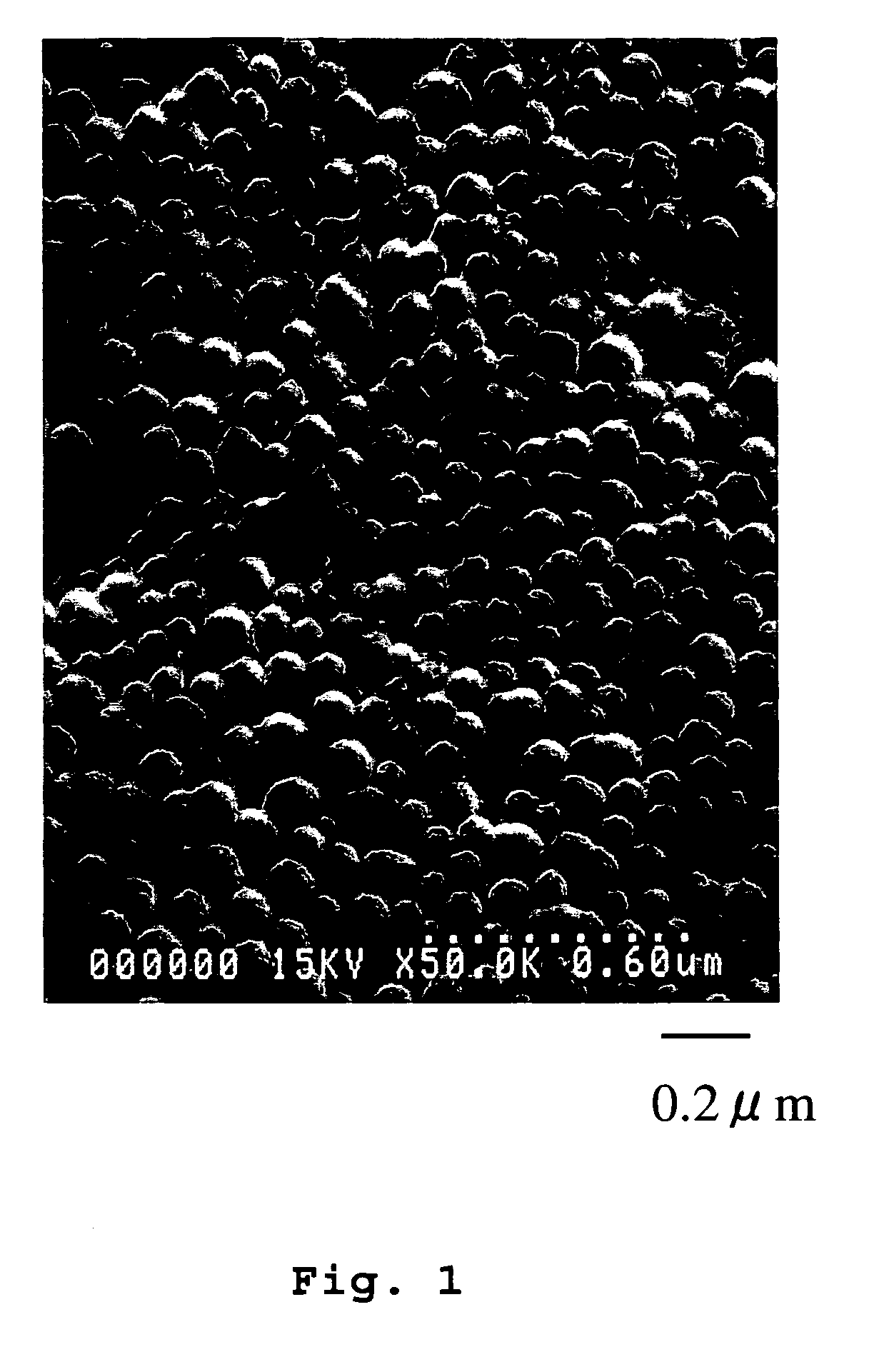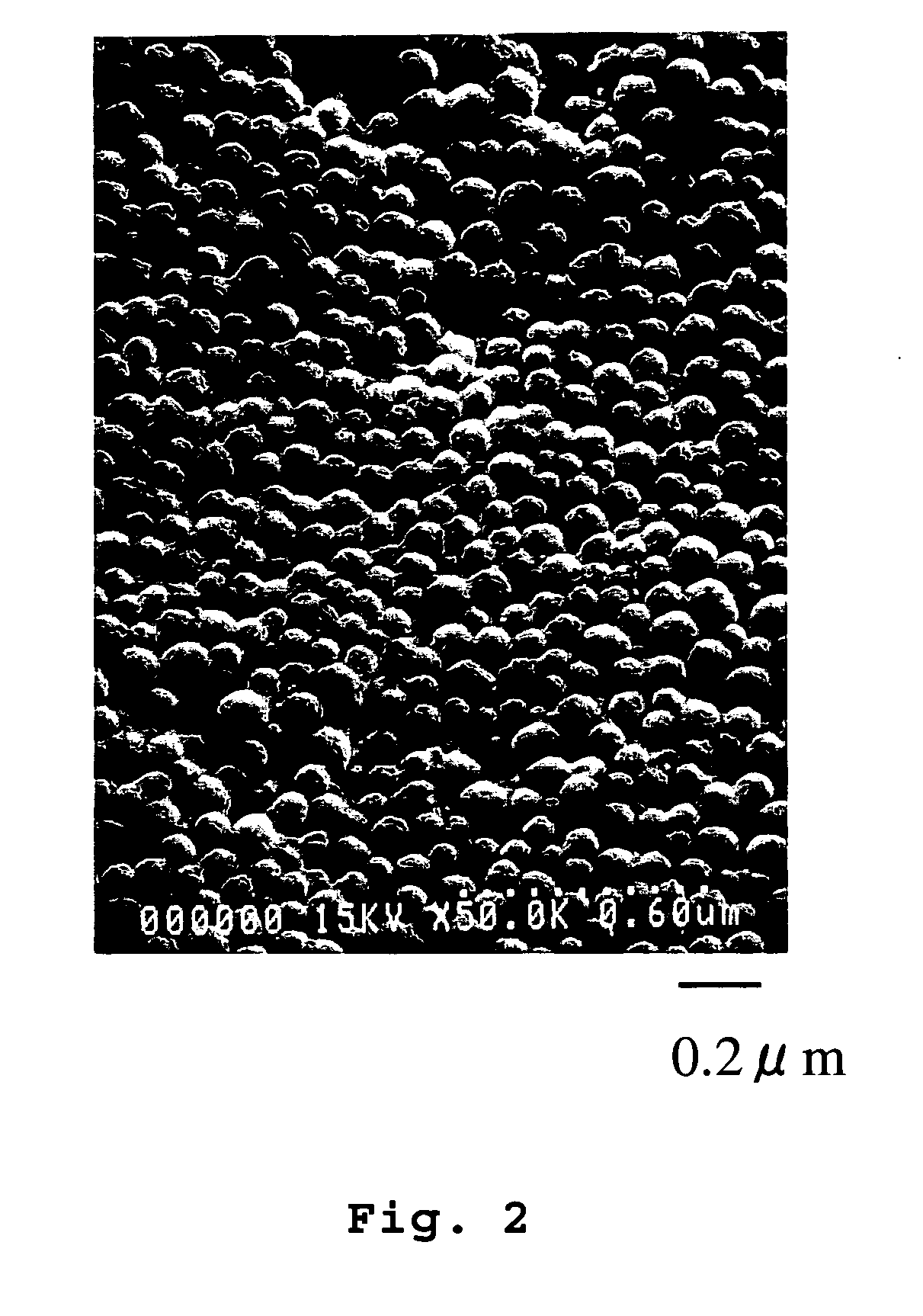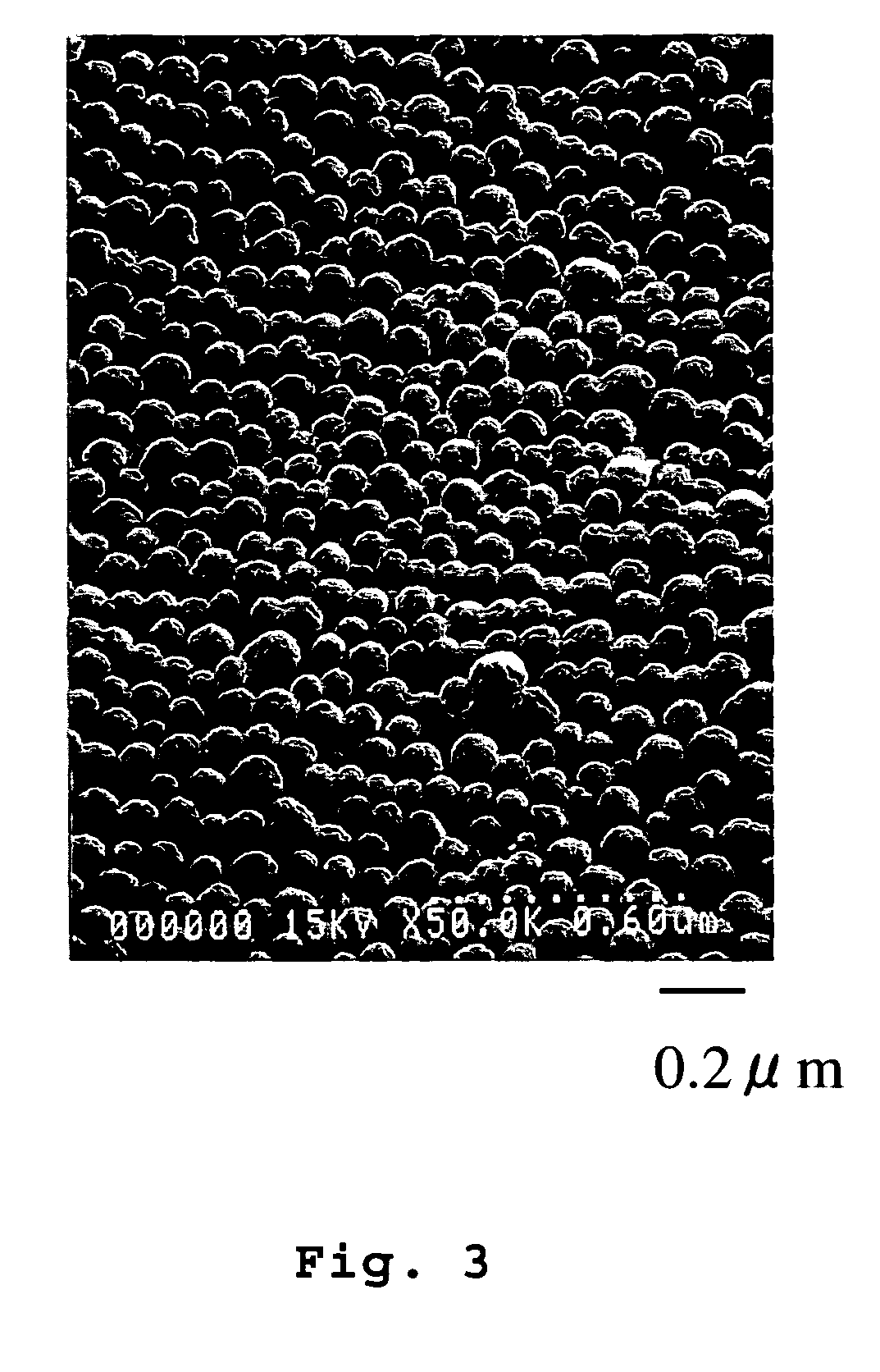Process for producing a layered article
a technology of layered articles and layered materials, applied in the direction of synthetic resin layered products, coatings, chemistry apparatuses and processes, etc., to achieve good anti-glare and high strength
- Summary
- Abstract
- Description
- Claims
- Application Information
AI Technical Summary
Benefits of technology
Problems solved by technology
Method used
Image
Examples
example 1
[0110] A mixed inorganic particle dispersion liquid was prepared by mixing 15 g of colloidal silica (tradename: Snowtex ST-XS; manufactured by Nissan Chemical Industiries, Ltd.; average particle diameter measured by the Sears method: 4-6 nm; solid concentration: 20% by weight; dispersion medium: water) as inorganic particles (A) and 25 g of colloidal silica (tradename: Snowtex ST-ZL; manufactured by Nissan Chemical Industiries, Ltd.; average particle diameter measured by the BET method: 78 nm; solid concentration: 40% by weight; dispersion medium: water) as inorganic particles (B) with 60 g of water, followed by stirring by a magnetic stirrer. The ratios of the inorganic particles (A) and (B) to the whole inorganic particles are given in Table 1. The mixed inorganic particle dispersion liquid was applied onto the cover layer of a substrate using a bar coater. Then, the dispersion medium was removed by drying at 60° C., yielding a layered article in which an inorganic particle layer ...
example 2
[0111] A mixed inorganic particle dispersion liquid was prepared by mixing 5 g of Snowtex ST-XS as inorganic particles (A) and 25 g of Snowtex ST-ZL as inorganic particles (B) with 70 g of water, followed by stirring by a magnetic stirrer. The ratios of the inorganic particles (A) and (B) to the whole inorganic particles are given in Table 1. The mixed inorganic particle dispersion liquid was applied onto the cover layer of a substrate using a bar coater. Then, the dispersion medium was removed by drying at 60° C., yielding a layered article in which an inorganic particle layer is on the substrate. The inorganic particle layer of the resulting layered article was superior in uniformity and denseness (see FIG. 2) and also in strength.
second embodiment
II. Examples of Second Embodiment
[0113] Examples and comparative example regarding the second embodiment of the present invention are provided below.
[0114] Characteristic properties as an anti-glare film were evaluated in the methods provided below.
[0115] Gloss was measured at an incident angle of 60 degrees by use of a gloss meter (GM-3D; manufactured by Murakami Color Research Laboratory Co., Ltd.).
[0116] The condition of a reflected image of a fluorescent lamp was observed visually. A case where the contour of the reflected image of the fluorescent lamp was clear was judged as “poor in anti-glare property” and was indicated by a symbol “x”. A case where the contour of the reflected image of the fluorescent lamp was a little unclear was judged as “moderate in anti-glare property” and was indicated by a symbol “Δ”. A case where the contour of the reflected image of the fluorescent lamp was unclear was judged as “good in anti-glare property” and was indicated by a symbol “◯”.
[01...
PUM
| Property | Measurement | Unit |
|---|---|---|
| particle diameter Db | aaaaa | aaaaa |
| particle diameter Db | aaaaa | aaaaa |
| particle diameter Dc | aaaaa | aaaaa |
Abstract
Description
Claims
Application Information
 Login to View More
Login to View More - R&D
- Intellectual Property
- Life Sciences
- Materials
- Tech Scout
- Unparalleled Data Quality
- Higher Quality Content
- 60% Fewer Hallucinations
Browse by: Latest US Patents, China's latest patents, Technical Efficacy Thesaurus, Application Domain, Technology Topic, Popular Technical Reports.
© 2025 PatSnap. All rights reserved.Legal|Privacy policy|Modern Slavery Act Transparency Statement|Sitemap|About US| Contact US: help@patsnap.com



